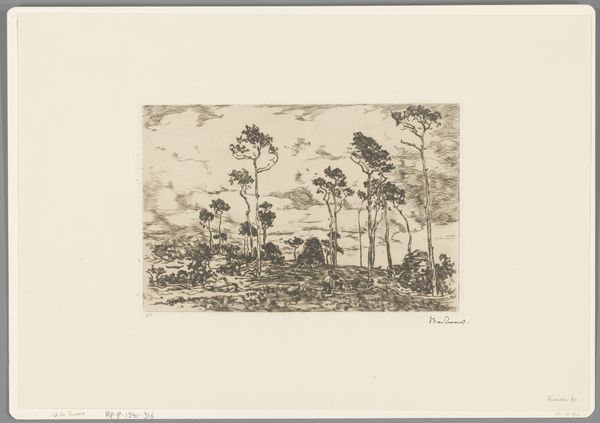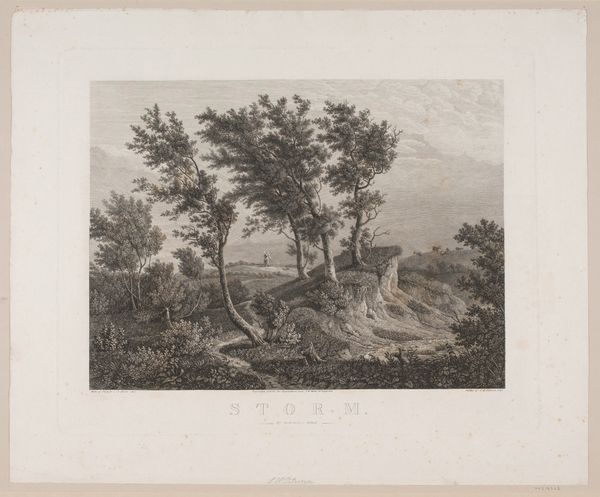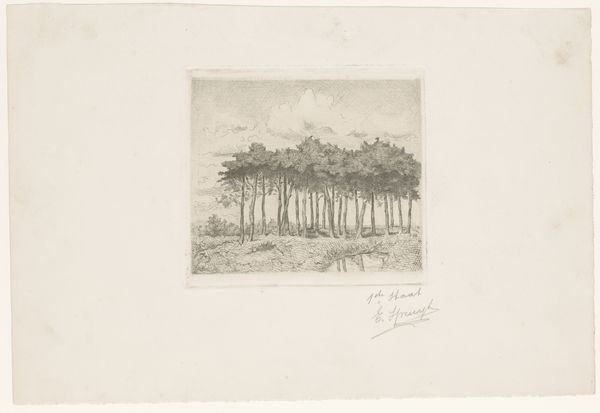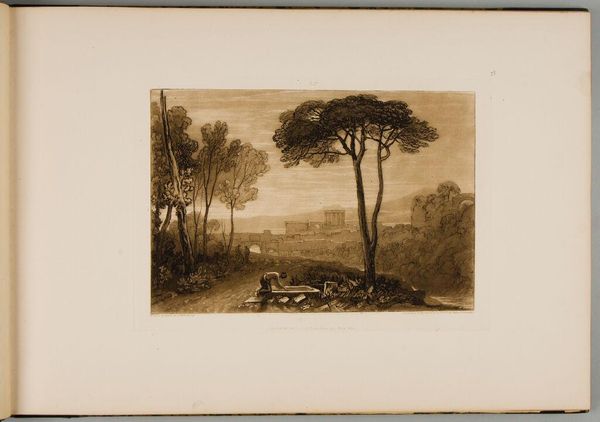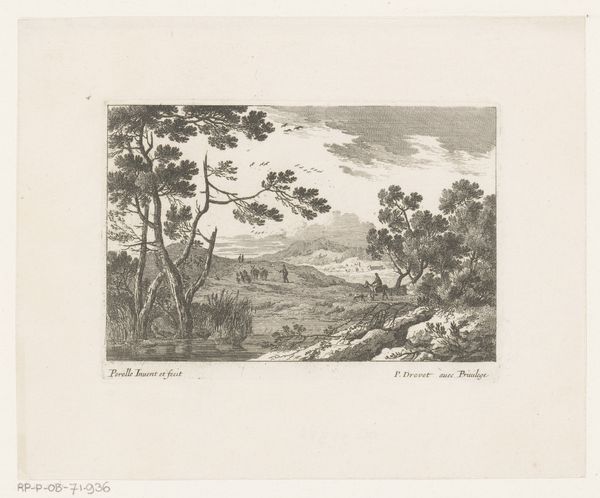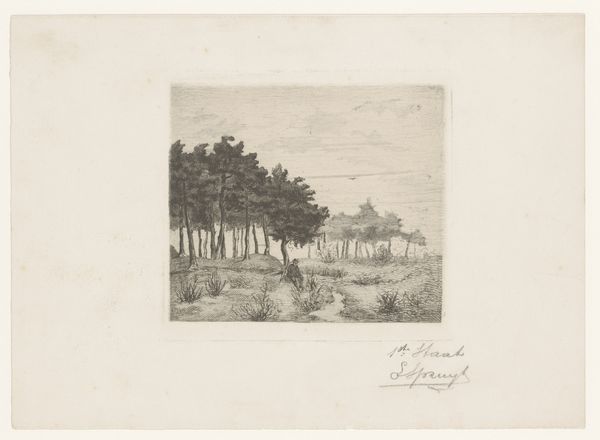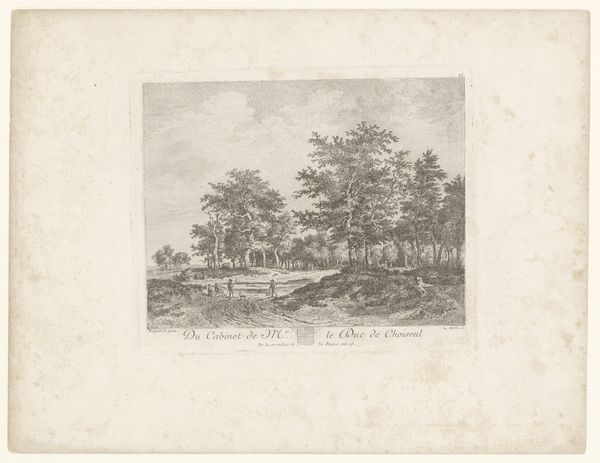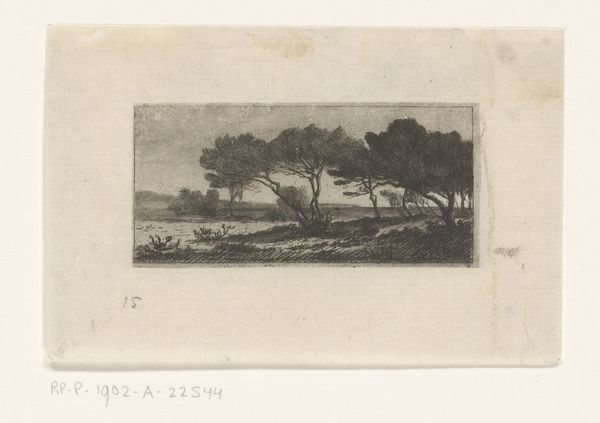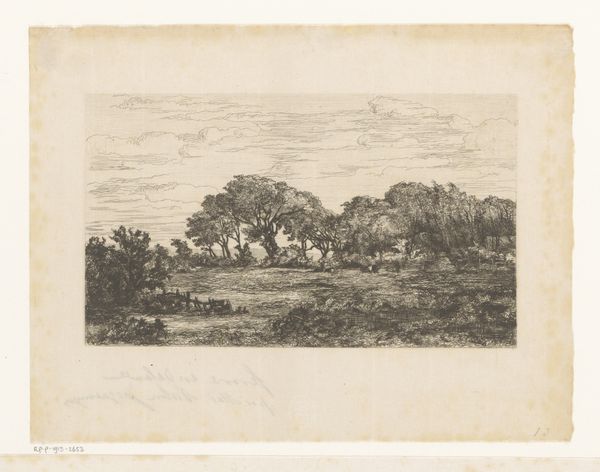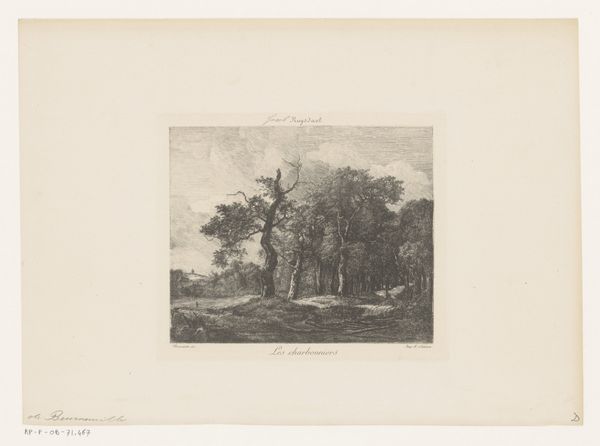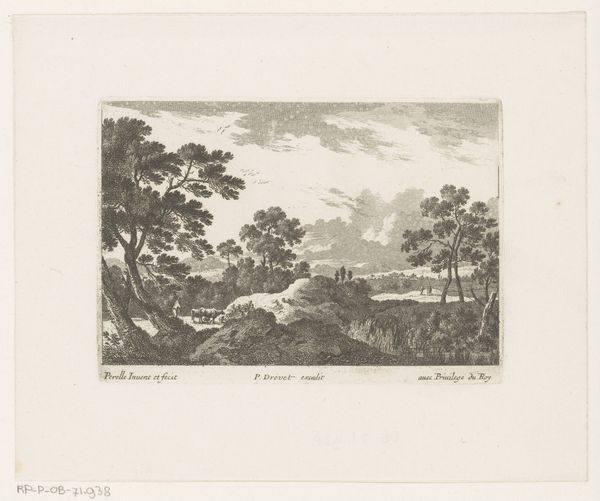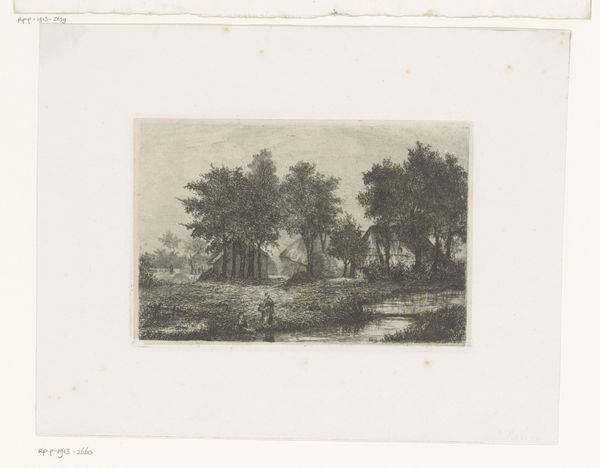
Combat in Pamfili, from Souvenirs d’Italie: Expédition de Rome 1853
0:00
0:00
drawing, lithograph, print, paper
#
drawing
#
lithograph
# print
#
landscape
#
paper
#
history-painting
Dimensions: 226 × 347 mm (image); 303 × 394 mm (primary support); 400 × 568 mm (secondary support)
Copyright: Public Domain
Editor: This lithograph, titled "Combat in Pamfili," by Auguste Raffet, was created in 1853. The rendering of the trees is exquisite; the whole scene evokes a somber yet meticulously observed atmosphere. How would you interpret this work? Curator: Look closely at how Raffet depicts these soldiers nestled among the trees. This combat scene isn't just about recording a historical moment. Raffet’s choice of the Pamfili gardens carries significant cultural weight. Consider gardens, historically, as spaces of both leisure and strategic importance, often contested ground between different factions or powers. What feelings are evoked by picturing a scene of war within a cultivated landscape? Editor: It feels like a violation, the imposition of conflict upon a place of supposed peace and beauty. Curator: Precisely. It serves as a powerful visual metaphor. Battle scenes frequently become iconic representations, symbols of not only the specific events but also the broader ideas of conflict and resolution in the culture's collective memory. Does it bring to mind any historical narratives, where gardens were battlegrounds? Editor: It reminds me of paintings where paradise is lost. This feels similar; the park setting seems violated by conflict, just as Eden was by the fall. Curator: A potent observation. These aren't just trees and soldiers, are they? They echo primal narratives of order disrupted and innocence lost. This is history transformed into enduring symbols. Editor: I hadn't thought about the symbolic dimensions so deeply. Thanks, I will now look more intently for encoded meaning in visual representation. Curator: The power of visual representation lies in this capacity to hold and transmit symbolic weight over generations. Understanding this cultural continuity enriches our perception of this image.
Comments
No comments
Be the first to comment and join the conversation on the ultimate creative platform.
